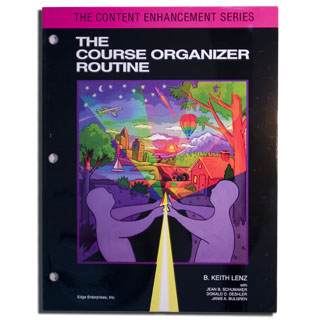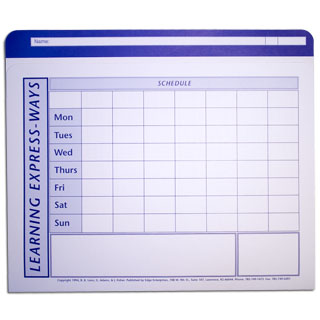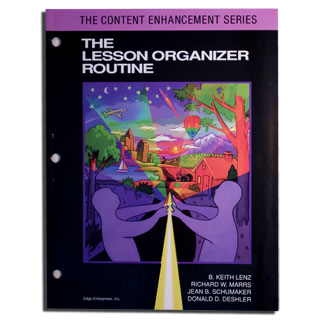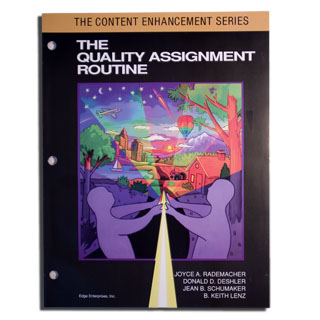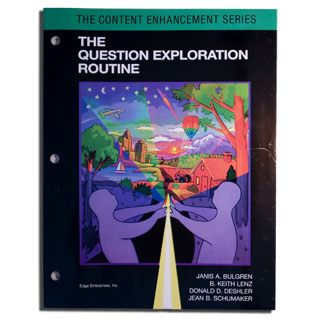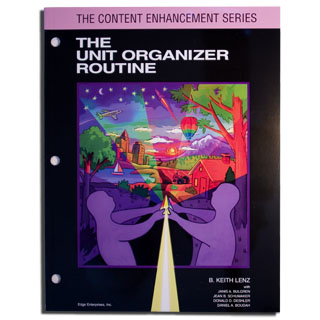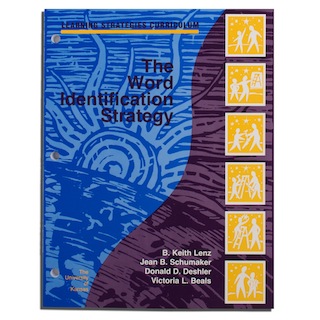Keith Lenz, Ph.D.
Affliations
- Senior Disability Researcher
- SRI International
- Menlo Park, CA
- President
- Velvet Bridge, Inc.
- Kansas City, MO
- Retired Senior Research Scientist
- Certified Professional Development Specialist
- University of Kansas Center for Research on Learning
- Lawrence, KS
- Retired Associate Professor
- Department of Special Education
- University of Kansas
- Lawrence, KS
My Background and Interests
My memories of elementary school are that I did what teachers asked me to do, and that if I did what the teachers asked, school was going as it was intended to go. I didn’t realize that learning was up to me and that I should at some point start assuming some responsibility for my own learning. Around 4th and 5th grade, I started to get into trouble with teachers because I wasn’t doing homework assignments. I really believed that schoolwork was done at school and that homework included all the activities I normally did at home, and they were mostly play activities. I didn’t connect independent effort and responsibility with schoolwork until my 6th grade teacher, Mrs. Mason, began to make the connection very explicit. Needless to say, because my 4th- and 5th-grade learning experiences were very dismal, 6th grade required a lot of hard work to make up for my earlier failures.
In many ways, the feelings of failure that I had in 6th grade have helped me greatly during my career. I know what it feels like to be caught cheating on a math test, face the principal’s grim questions about why none of the first 75 pages of my social studies workbook have been completed, see column after column of D’s and F’s on my report card, and continuously struggle to understand what I was doing wrong in school. Looking back, those early experiences and feelings made me understand what it feels like not to understand how to learn. Not only did I struggle with learning, but I also watched many of my classmates struggle with teachers who taught on the surface without barely a thought or concern about unlocking learning for any of us.
I had to figure out how to learn on my own. I eventually became a teacher myself, teaching at the junior high school, high school, and university levels. As I learned how to teach, those memories of my schooling kept me honest about what I wanted to do in my teaching. Also, when I became a researcher, I realized that I wanted to make learning easy for students. I wanted to develop teaching methods and materials that would help them become good learners.
I will be the first to admit that I have not always been a good learner or a good teacher. However, I have always wanted to be a better learner and a better teacher. Working with my colleagues to develop learning strategy instruction, the Content Enhancement Routines, and other interventions related to strategic instruction has taken me exactly where I know I needed to go in order to help teachers teach better and to help students learn what they need to learn. I know that these are the tools that my teachers needed to use when teaching me years ago.
The Story Behind The Course Organizer Routine
Not too long ago, Jean Schumaker, Don Deshler, and I had an opportunity to study how teachers approach planning in order to teach diverse groups of learners. We asked secondary social studies and science teachers to partner with us to help us understand and improve ways to plan for teaching content to academically diverse groups of students. We started with lesson planning and then moved to unit planning. While we learned about many important elements of lesson and unit planning, we also quickly learned that teachers had previously made many of the important instructional decisions that seemed to influence unit plans and plans for day-to-day instruction. In essence, many decisions that influenced their ongoing teaching had been made when they were planning at the course level.
While we came to understand that course planning was very important, we encountered some difficulty when we asked teachers to think about how they might better approach course planning to teach academically diverse groups of students. Indeed, when we asked teachers what was involved in effective course planning, the resulting list of planning behaviors included 180 different items. The teachers included “everything but the kitchen sink” on the list! A review of research literature available at the time indicated that few studies had ever been completed on effective course planning. Moreover, a review of textbooks for preparing teachers provided us with few insights into the characteristics of effective course planning.
As we studied teacher planning, there were several important findings that eventually shaped the final version of the Course Organizer Routine. First, we learned that what distinguishes unit planning from course planning is that unit planning must focus on planning tasks that lead to instructional precision, explicitness, and the alignment of teaching to help students meet standards. On the other hand, we learned that course planning must focus more on the larger vision of what the teacher wants students to believe the course is about. Thus, overall course planning must be about enlisting the students’ participation in a journey. The elements of course planning must focus on identifying the landmarks for tracking the journey and identifying the tools, traveling principles, and supports that will make it a successful journey. Third, course planning is less precise than unit planning, and many of the planning decisions that are initially made may need to be revisited as the course unfolds. Each student group will reshape the course. Fourth, the need for revising a course or launching the course-planning process becomes most apparent after teachers have completed several Unit Organizers and realize that assessment tools need to be revised and then eventually realize that their revised approach to teaching, represented by their commitment to the use of the Unit Organizer Routine, requires them to rethink the way they have planned their course.
I believe that the Course Organizer Routine represents an important contribution to the field of teacher planning. There is an important link that needs to be established between the vision that is created when a teacher plans a course, the detailing of the explicit relationships that must be ensured as a part of unit planning, and the details that must be identified to provide students with enough background knowledge as part of lesson planning. The Course Organizer Routine may not be the first teaching routine that a teacher learns and implements, but it is a critical routine in helping a teacher tie all the teaching routines together.
My Thoughts About Content Enhancement Routines
I believe that the Content Enhancement Routines are comprised of those practices that we currently know are effective for teaching critical content to academically diverse groups of students. Several elements embedded in each of these routines reflect the evidenced-based practices that should be incorporated into content-area teaching. First, carefully designed graphic organizers are used in each routine to allow teachers to focus student attention on critical content. Second, detailed implementation guidelines are provided that supply details related to how each graphic-organizer teaching device should be used in order to replicate the results of the original research. These guidelines are captured in “Linking Steps” for each routine, and each step is linked to how each section of the graphic organizer should be used to verbally lead students to organize, understand, and remember critical content. The verbal supports used by the teacher ensure that each graphic-organizer teaching device become more than just another graphic organizer. Third, explicit procedures are given in the manual that are related to how to use the teaching devices to grow a “teaching routine” that students can expect the teacher to use repeatedly throughout the school year to model and encourage the development of strategic patterns of thinking. As students repeatedly experience the routine, they learn how to use the device independently to become more strategic in completing tasks. Finally, when the devices and routines are used with sufficient explicitness, rigor, and frequency, they can be used to prompt the development of both general and content-specific literacy and reasoning strategies.
I would like to see all teachers consider using Content Enhancement Routines to improve their teaching in relation to academically diverse groups of students. In the beginning, use of these routines does require some really deep thinking about what is truly critical for all students to learn. Accurately selecting the most critical content that all students should be expected to learn is the most difficult step in the overall process of implementing any Content Enhancement Routine. The device associated with each Content Enhancement Routine then becomes a tool to help teachers ensure that the most critical content is explicitly taught and learned by all students. I have heard some people use the expression, “Garbage in; garbage out.” To me, this means we can teach dumb stuff really well, but the learning that is produced doesn’t amount to much. This orientation to teaching won’t help us improve student scores on critical outcome measures. Thus, the careful consideration of what is truly critical to teach and to enhance is the first step to improving teaching in content-area courses.
As a footnote to these remarks about the implementation of Content Enhancement Routines, I want to mention two components that I believe provide important supports to the effective use of the routines. First, computer software called GIST has been developed to help teachers develop, plan for the integration of, and present and use Content Enhancement devices with students. A GIST software purchase comes with the graphic organizer templates for the Course Organizer Routine, the Unit Organizer Routine, and the Lesson Organizer Routine ( www.gistplan.com ). Templates for the other routines in the Content Enhancement series are also available for purchase. What is important about the software is that is allows for the integration and digital creation, adaptation, and reuse of each device. Second, a library of devices completed by teachers in a variety of subject areas is available for free downloading and sharing to help teachers get started with the content enhancement planning process. The content enhancement library of devices is called Depot and can be found at www.stratepedia.org
Teacher Feedback on the Course Organizer Routine
One of the first things we learned when we asked teachers to develop and use the ten course questions for the Course Organizer Routine was how unfamiliar some teachers were with identifying and teaching the big ideas of their courses. As we began our research, we asked a group of teachers to develop, over a summer, ten course questions that represented the big ideas that they would emphasize throughout the course to help students integrate ideas that they were learning in specific units. However, by the end of November, many of the teachers reported that they needed to revise their course questions. Indeed, as we have worked with teachers over the years, we have learned that teachers need to work with and revise their course questions over three to five years before they can say that they are satisfied with their course questions.
Teachers have also reported to us that using the Course Organizer Routine helps them survive the pressures and expectations that have come to them as a result of increased accountability related to high-stakes assessments. One teacher summarized for me what many teachers have told in me in many ways: “I know I can’t teach everything, so by selecting my ten course questions and the critical course concepts and by organizing my content into the map of units in the course, I can begin to make decisions about what content is critical and what content is not. In the past, what I didn’t teach was decided by default. I simply ran out of time, and I hoped that that they would learn it in time on their own. That was pretty naïve. When I started using the Course Organizer and began to develop other Content Enhancement devices to support the content identified on the Course Organizer, my teaching became more intentional and focused. I know that most of my students are now better prepared when they face high-stakes assessments.”
My Contact Information
Please contact me at keith.lenz@sri.com


